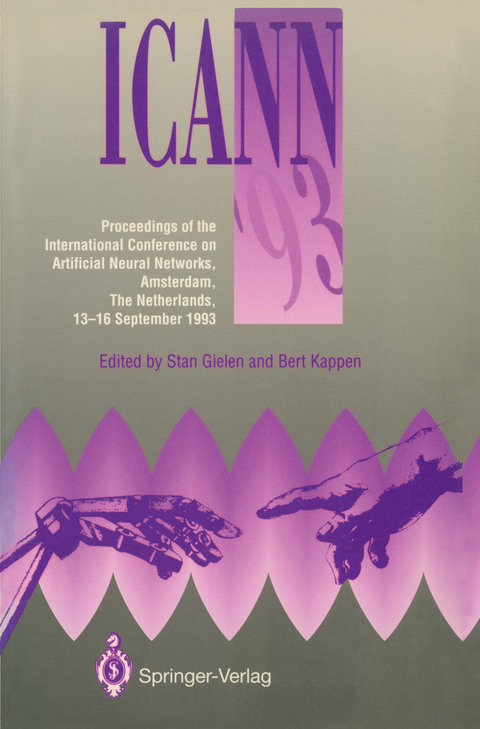
ICANN ’93
Proceedings of the International Conference on Artificial Neural Networks Amsterdam, The Netherlands 13–16 September 1993
Seiten
1993
|
1st Edition.
Springer Berlin (Verlag)
978-3-540-19839-0 (ISBN)
Springer Berlin (Verlag)
978-3-540-19839-0 (ISBN)
This book contains the proceedings of the International Confer ence on Artificial Neural Networks which was held between September 13 and 16 in Amsterdam. It is the third in a series which started two years ago in Helsinki and which last year took place in Brighton. Thanks to the European Neural Network Society, ICANN has emerged as the leading conference on neural networks in Europe. Neural networks is a field of research which has enjoyed a rapid expansion and great popularity in both the academic and industrial research communities. The field is motivated by the commonly held belief that applications in the fields of artificial intelligence and robotics will benefit from a good understanding of the neural information processing properties that underlie human intelligence. Essential aspects of neural information processing are highly parallel execution of com putation, integration of memory and process, and robustness against fluctuations. It is believed that intelligent skills, such as perception, motion and cognition, can be easier realized in neuro-computers than in a conventional computing paradigm. This requires active research in neurobiology to extract com putational principles from experimental neurobiological find ings, in physics and mathematics to study the relation between architecture and function in neural networks, and in cognitive science to study higher brain functions, such as language and reasoning. Neural networks technology has already lead to practical methods that solve real problems in a wide area of industrial applications. The clusters on robotics and applications contain sessions on various sub-topics in these fields.
Plenary Contributions.- Principles from Neurobiology.- Robotics.- Cognitive Connectionism.- Physical and Mathematical Theory.- Applications.- Author Index.
| Erscheint lt. Verlag | 24.9.1993 |
|---|---|
| Zusatzinfo | XXVII, 1095 p. 79 illus. |
| Verlagsort | London |
| Sprache | englisch |
| Maße | 155 x 235 mm |
| Gewicht | 1659 g |
| Themenwelt | Informatik ► Grafik / Design ► Digitale Bildverarbeitung |
| Informatik ► Theorie / Studium ► Künstliche Intelligenz / Robotik | |
| Naturwissenschaften ► Biologie ► Humanbiologie | |
| Schlagworte | AI • Artificial Intelligence • Artificial Neural Network • Artificial Neural Networks • brain • Cognition • Dynamical Systems • Information Processing • Intelligence • neural network • Neural networks • Neurobiology • neurons • Pattern • pattern recognition • robot • Robotics |
| ISBN-10 | 3-540-19839-3 / 3540198393 |
| ISBN-13 | 978-3-540-19839-0 / 9783540198390 |
| Zustand | Neuware |
| Informationen gemäß Produktsicherheitsverordnung (GPSR) | |
| Haben Sie eine Frage zum Produkt? |
Mehr entdecken
aus dem Bereich
aus dem Bereich
alles zum Drucken, Scannen, Modellieren
Buch | Softcover (2024)
Markt + Technik Verlag
24,95 €
Modelle für 3D-Druck und CNC entwerfen
Buch | Softcover (2022)
dpunkt (Verlag)
34,90 €
Methoden, Konzepte und Algorithmen in der Optotechnik, optischen …
Buch | Hardcover (2024)
Hanser (Verlag)
39,99 €


